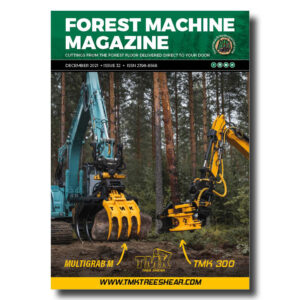Amsterdam plans to build a wooden neighbourhood called Mandela Buurt
Amsterdam has confirmed plans to build Mandela Buurt, an entire neighbourhood made out of wood. This is a renewable material that the region hopes will be key in reducing building emissions.
The new quarter, dubbed the first such neighbourhood in a Dutch city in several centuries, reflects a broader commitment by municipalities in Greater Amsterdam in 2020 to ensure that at least 20% of new construction uses wood as its primary material by 2025. The move, the city argues, will do much to reduce the emissions of the construction sector, and possibly provide a model for future wooden developments.
Named the Mandela Buurt (“Mandela neighbourhood”) after the neighbouring Nelson Mandela Park, the neighbourhood would be located in the city’s south and is due to start construction in 2025. It will contain ten new apartment blocks, a primary school and social facilities, housing an estimated 2,100 residents in 700 new apartments.
Crucially for a city experiencing a lack of available affordable housing, the new district’s social benefits will not be restricted to sustainable building materials. Located in a relatively low-income part of the city, 80% of the new neighbourhood’s homes will be offered as public or affordable housing at lower than market rents, with people having lived in the area for six years or more given some priority access to tenancies.
While no detailed plans of the neighbourhood have yet been released, the commitment to wooden construction could offer numerous benefits. Because trees can be replanted, wood is a renewable resource. And the structural mass timber used in construction does not necessarily require a finish of masonry, reducing the amount of materials needed and simplifying the construction process. Buildings constructed out of wood not only reduce emissions; they can also store carbon. A Finnish study from 2020 estimated that, if 80% of Europe’s construction switched to wood as its primary material, the amount of carbon sequestered would be equivalent to 47% of the emissions from the continent’s concrete industry.
Wooden construction can also help speed the delivery of new buildings, as many components can be prefabricated and assembled away from a building’s planned location. While construction at the Mandela Buurt site will not begin until 2025 (and architectural designs for the housing have not yet been submitted), the city estimates that the neighbourhood’s first homes could be ready as soon as 2026.
Amsterdam is far from the only European city to be encouraging the use of more wood in construction. In the Nordic countries, wood is already a common material of choice, and projects to date include wooden skyscrapers in Norway and an entire city block redeveloped using wood in Helsinki. But as one of the least-forested countries in Europe, the Netherlands is not a place where timber has been a major construction material in recent history, beyond house frames and beams. And the potential need to import timber from other regions does make Dutch wooden construction somewhat less sustainable, although the Netherlands is taking measures to increase its forest area
-
That’s a remarkable amount of work hours for a single machine, the Norcar 600 owned by Erkki Rinne is taken well care of, it even has the original Diesel engine.
-
Kieran Anders is a forestry contractor working in the lake district. His work involves hand cutting and extracting timber using a skidder and tractor-trailer forwarder.
-
It is not possible to eliminate chain shot, but there are simple steps that can be taken to reduce the risk.
-
Arwel takes great pride in the fact that the mill has no waste whatsoever, “the peelings are used for children’s playgrounds, gardens and for farm animals in barns in the winter and the sawdust has multiple uses in gardens and farms as well.
-
Timber hauliers need to encourage young blood in, and also look after the hauliers we have, we need make the sector a safe and positive place to work.
Find Us On
Related Posts
None found
Forest Machine Magazine is written and edited by a forest professional with over 40 years hands on experience. We are dedicated to keeping you informed with all the latest news, views and reviews from our industry.
To support us you can subscribe to our bi-monthly magazine which is delivered to your door from only £30 per year.
Subscribe here
#homeoflogging #writtenbyloggersforloggers #loggingallovertheworld
-
 Issue 32£6.00
Issue 32£6.00


